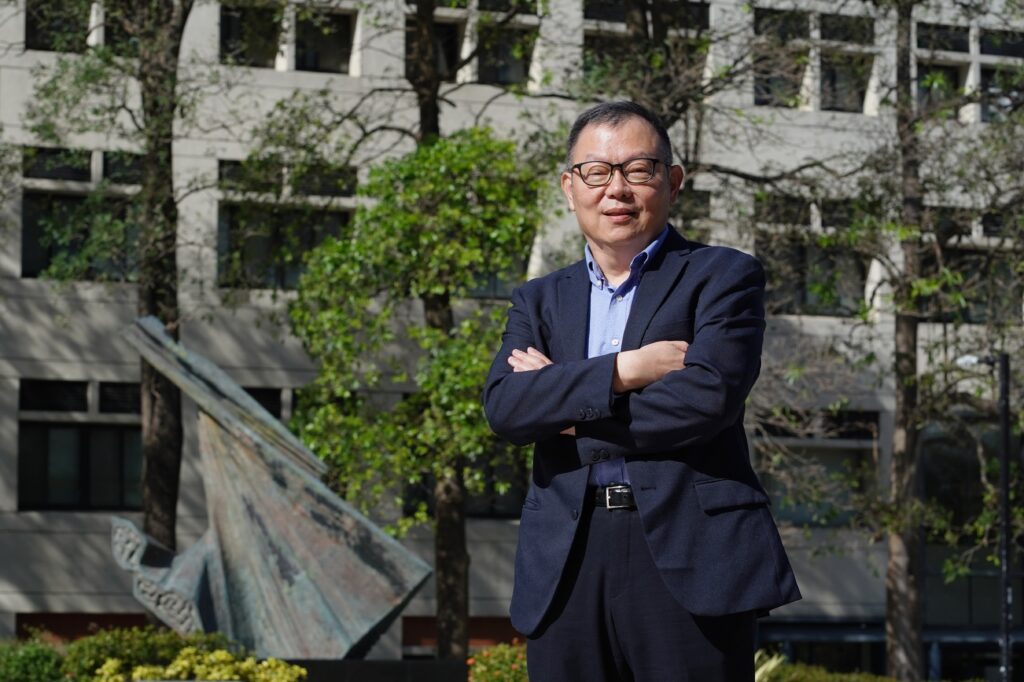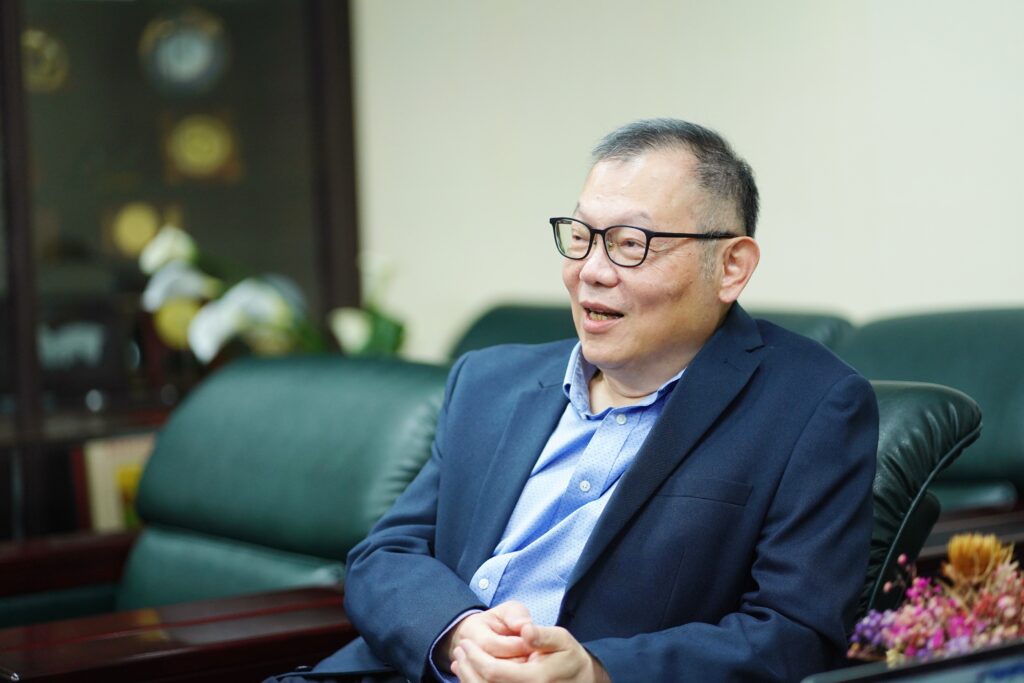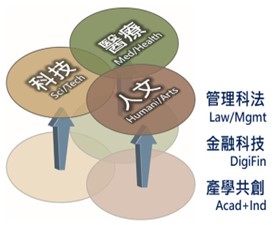
The interior windowsills of the meeting room are full of souvenirs from past exchanges with other schools around the world. These souvenirs record the brilliant achievements of these academic exchanges. NYCU President Chi-Hung Lin quickly walked into the meeting room, smiling. He had a meeting before 8 o’clock in the morning and a full schedule today. He started the conversation by saying, ‘Liberal Arts Education’ is one of the key focuses of National Yang Ming Chiao Tung University (NYCU) following the school merger. It is important for us to make the school a breeding ground for lifelong learning and cultivating global leaders.
Sprouting New Roots: Engineering Medicine across Domains
Chiao Tung University is known for science and engineering, and Yang Ming University is renowned for medicine. In February 2021, the two universities merged and became the first successful merger of national universities in Taiwan. Chi-Hung Lin, NYCU president, has led the process of integration from the initial stages after the merger to the present state. The chip shortage caused by the COVID-19 epidemic in recent years and the demand for smart bioelectronics have made Taiwan’s semiconductor industry a critical player in global geopolitics. The unique academic and R&D characteristics of NYCU are not only evident in the semiconductor field, but also in medical technology, which introduces engineering thinking into medicine and offers a new approach to the traditional medical model. The Smart Medical Institute emphasizes the ideal blueprint of “Engineering Medicine,” which aims for “predictability, prevention, continuance, personalization, and decentralization for healthcare.”
As we know, Yang Ming and Chiao Tung Universities were originally the training grounds for medical professionals and semiconductor talents, respectively. With the merger and combined resources NYCU has the foresight to invest in the research and development of fields such as regenerative medicine, immune cells, and quantum computing. In response to the development of technologies such as advanced semiconductors, artificial intelligence, 5G communications, and the Internet of Things, they established the “Digital Medicine Center” and the “Industry Academia Innovation School (IAIS)” in 2021. The Institute of Pioneer Semiconductor Innovation and the Institute of Artificial Intelligence Innovation were established in IAIS to cultivate future high-tech and medical talents and to support NYCU in creating a more comprehensive research environment. “We must select suitable fields, use our strengths, and experiment non-traditional ways in key fields;” said President Lin.

Liberal Arts Education Mimics “One Tree, One Hundred Harvests”
However, in the face of challenges that come with merging the two Universities, Chi-Hung Lin believes that the key is to have a broad mindset. Mutual toleration, understanding, and appreciation are important to stimulate innovation. “One Tree of Hundred Harvests” Project, a major undertaking in the initial phase of the merger that defines the path to greatness of the new NYCU, includes three major themes: Science & Technology, Medicine & Health, and Humanities/Arts (see the diagram below). Under these three themes, innovative projects incorporating strategies such as management science and law (Law/Mgmt), financial technology (FinTech), physician-engineer (MD-Eng), biology and technology (Bio-ICT), industry-university co-creation (Acad/Ind), etc. are developed to bring together talents crossing disciplines so they work in concert to scale a new height for the future NYCU.

The goal of promoting liberal arts college education is to create a lifelong learning field with integrity and freedom, and where faculty and students can prosper together. Chi-Hung Lin believes that Taiwan’s higher education has the responsibility to cultivate “resilience and adaptability” for the next generation. This has become the three core values of NYCU’s “aim for greatness”: organizational culture, academic freedom, and abundant resources. “The entire administrative team is working to create a stage for faculty and students to develop their talents,” he emphasized.
“Be great! Have a growth mindset to break through the framework and challenge the future with an entrepreneurial spirit.” Adopting the vision of a “Great University,” Chi-Hung Lin has his own interpretation of the acronym “GREAT”: “G” stands for Growth Mindset, “R” stands for Reframing, “E” stands for Entrepreneurship, “A” stands for Achieving courageous practice, and “T” stands for Technology for good. These five categories highlight NYCU’s academic image, campus atmosphere, and the character of its faculty and students.
Chi-Hung Lin believes that rankings are not the only measure of success. It is more important to improve the quality of teaching and research, increase internationalization, and find the value that belongs to NYCU. He believes that the new environment can inspire new ideas and create new values, while also maintaining traditions and connections between different fields. “Tolerance, understanding, appreciation, and finally innovation – this is my greatest expectation for the university merger”.
With the excellent achievements of the past and the combined strength of the present the newly merged NYCU has all the necessary elements promised to become an extraordinary university in engineering and medicine, putting Taiwan on the academic stage as an Asian Star.
